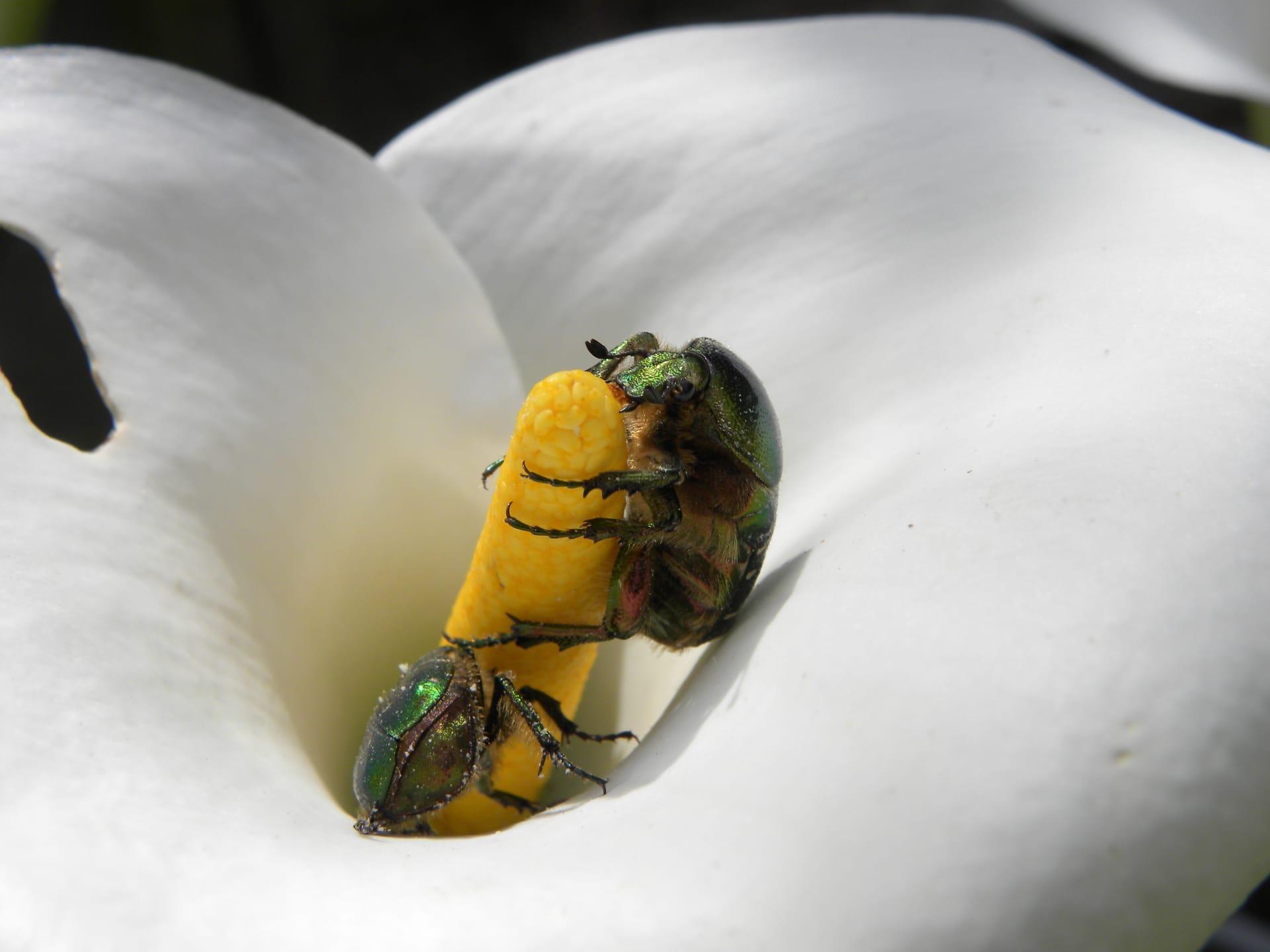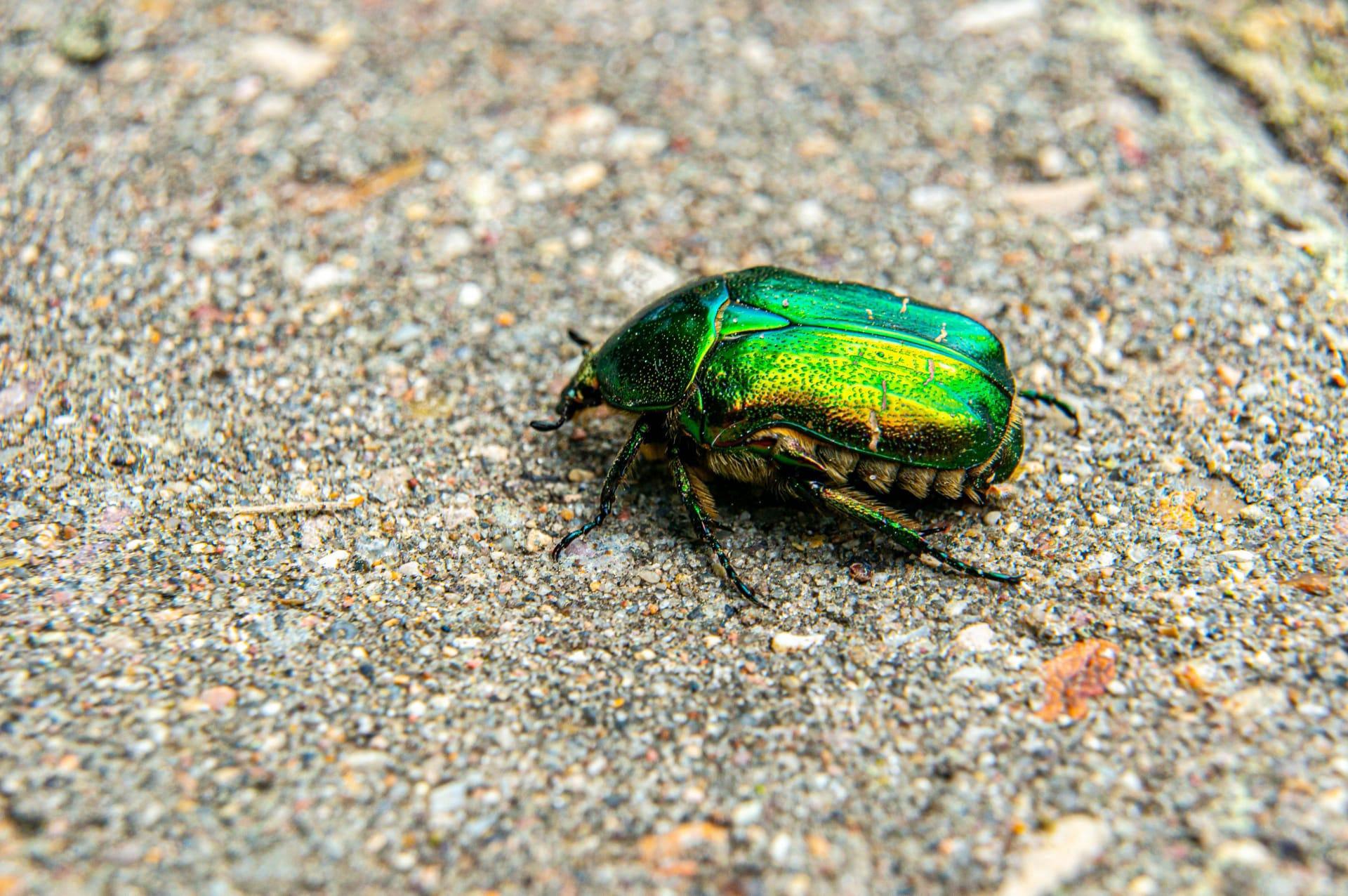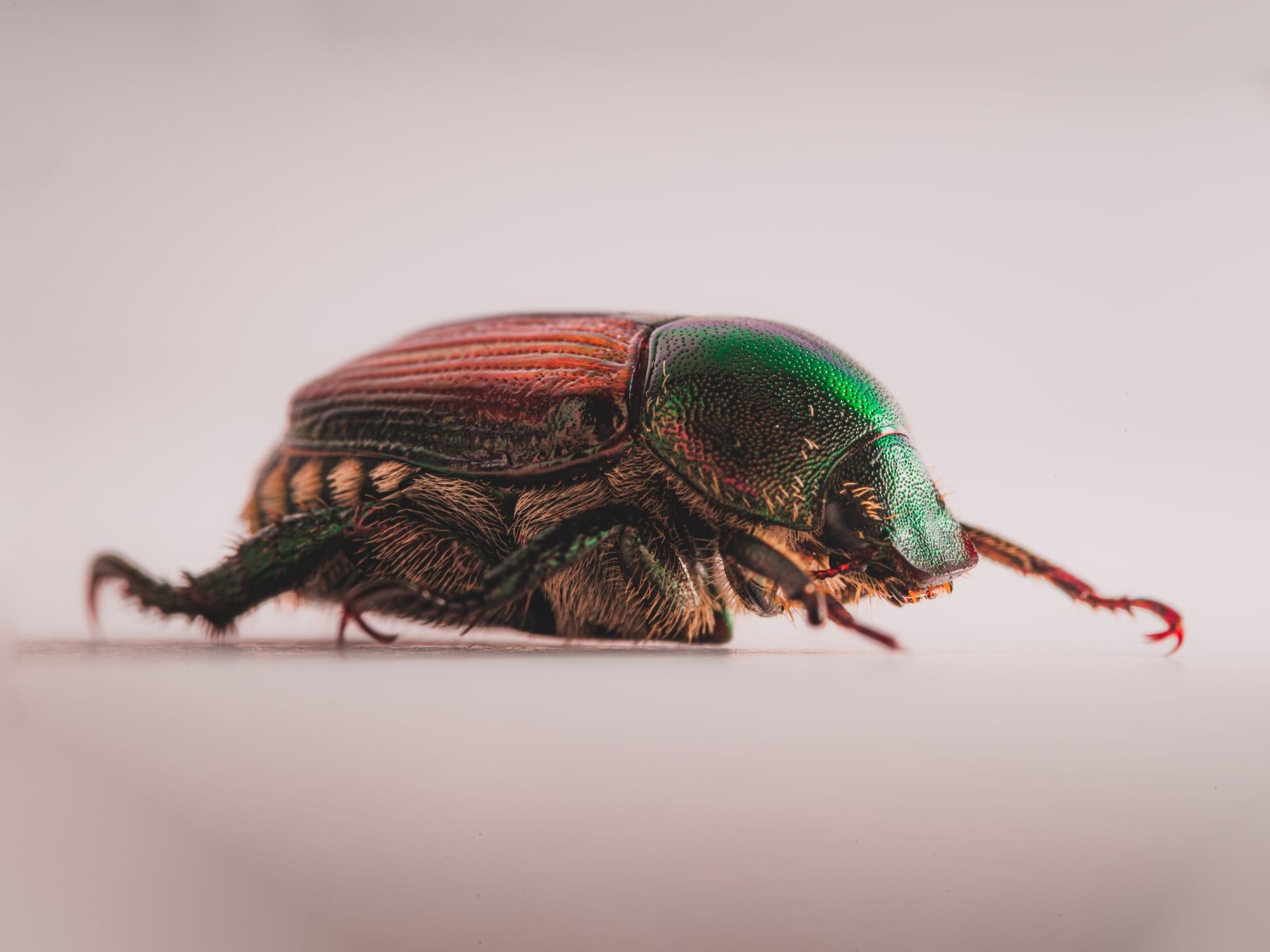1
The Japanese Beetle, scientifically named Popillia japonica, is a small yet voracious pest, about 0.6 inches (1.5 cm) in length, with a unique, metallic green body and copper-colored wings. These colors are not just for show; they reflect sunlight in a way that makes them highly visible to mates and predators alike. This beetle, native to Japan as the name suggests, was first found in the United States in 1916 near Riverton, New Jersey. Since then, it has spread widely and become a significant pest in gardens and agricultural fields, feasting on over 300 plant species.
One of the most fascinating aspects of the Japanese Beetle is its life cycle, which is marked by a dramatic transformation. The adult beetles emerge from the ground in late June to early July and live for around 30 to 45 days. During this time, they are incredibly active, feeding on plants and mating. Females lay eggs in the soil, which hatch into grubs. These grubs are notorious for damaging lawns and golf courses as they feed on grass roots. As winter approaches, they burrow deeper into the ground, only to emerge the following summer as adult beetles, continuing the cycle.

2
Japanese Beetles are not picky eaters, which contributes to their status as a major agricultural pest. They feed on a wide variety of plants, including roses, grapes, beans, and raspberries, often consuming only the leaf material between the veins, a behavior known as "skeletonizing". This method of eating not only damages the plants but also gives the leaves a distinctive, lace-like appearance. Their appetite is so voracious that a large group of beetles can defoliate an entire plant in a matter of hours, causing significant agricultural and economic impact.
Interestingly, Japanese Beetles are social feeders, meaning they are attracted to plants already being eaten by other beetles. This behavior is facilitated by pheromones released by feeding beetles, attracting others to join the feast. This social aspect makes them particularly challenging to control, as a few beetles quickly turn into a large infestation. They are most active on warm, sunny days, which is when they do the majority of their feeding and mating, making these conditions ideal for monitoring and managing their populations.

3
The Japanese Beetle has a unique defense mechanism against predators. When threatened, they secrete a fluid from their mouth, which contains a blend of chemicals that can be irritating to potential predators. This defense strategy, while not foolproof, offers some protection and can deter small predators like birds. However, this doesn't always work against larger predators or in situations where the beetles are in large numbers and easy to catch.
Another interesting fact about Japanese Beetles is their impact on air travel. In some regions with high beetle populations, these insects have been known to swarm around airports, attracted by the large, open grassy areas often found there. They can become a nuisance for pilots and ground crew, and there have been instances where they have interfered with the operation of aircraft, by getting sucked into engines or smearing windshields. Airports in affected areas sometimes have to implement special control measures during the peak beetle season to mitigate this problem.

4
Japanese Beetles are not just a problem in the United States. They have been accidentally introduced into other countries as well, including Canada and several European countries. Their spread is often attributed to international trade, as they can easily hide in soil and plant materials transported across borders. Once established, they are incredibly difficult to eradicate due to their high reproductive rate and adaptability to various environments. This has led to strict regulations in many countries regarding the import of plants and soil to prevent their spread.
In their native Japan, Japanese Beetles are not as significant a pest as they are in the United States. This is largely due to the presence of natural predators and environmental factors that keep their populations in check. In Japan, they have natural enemies like certain species of wasps and birds that prey on them effectively. However, in new environments like North America, the lack of these natural predators allows their populations to grow unchecked, making them more of a menace.

5
The Japanese Beetle is an example of how invasive species can impact ecosystems. In areas where they are introduced, they often disrupt the local food chain by preying on native plants and competing with native species for resources. Their feeding habits can also lead to soil erosion and a decrease in biodiversity, as they can completely strip plants of their foliage. Efforts to control them, such as the use of pesticides, can further impact the environment by harming non-target species and disrupting ecological balance.
Efforts to control the Japanese Beetle include a variety of methods, ranging from chemical pesticides to biological control. One of the more environmentally friendly methods is the use of milky spore disease (Bacillus popilliae), a naturally occurring bacterium that specifically targets Japanese Beetle grubs. This method is preferred in organic farming and gardening. Another biological control method involves the use of parasitic wasps that prey on the beetle's eggs and larvae. While these methods are not completely effective in eradicating the beetle, they help manage its population without causing significant harm to the environment.